Skunks are native to southern Canada, northern Mexico, and the United States. They typically live in secluded areas like burrows and nests. So, surviving extreme weather (hot or cold) is possible for them.
Are there skunks in Florida?
There are skunks in Florida. Florida is home to two skunk species: The Eastern Spotted and Striped skunk. Both skunk species are nocturnal, coming out at night to look for food. Although in Florida, the Eastern Spotted skunks sometimes go out to forage during the day.
Well, that would not be all there is to the skunks in Florida now, would it? In the rest of this article, we explore some of the details of skunks in Florida.
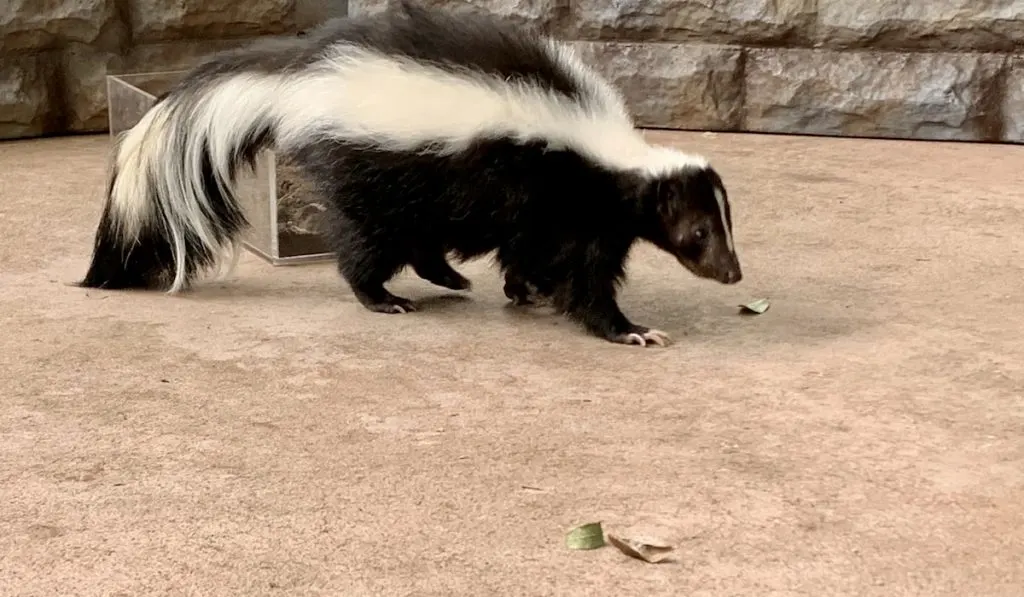
Are There Skunks in Florida?
As we already mentioned, there are skunks in Florida. The skunk species found in Florida are about the same size as a regular house cat. They have short legs, bushy tails, and a small head.
These skunks have several means of defending themselves. But their most preferred choice is an oily musk spray from scent glands located near their anus.
When their spray is aimed at intruders, it can reach as far as 15 feet. It fends off predators like coyotes, foxes, domestic dogs, and bobcats.
Where Do Skunks Live in Florida?
With the Keys being an exception, Striped skunks exist throughout Florida. They can live in both residential and natural areas.
You can find them in places with open spaces and dense vegetation. Although, Striped skunks prefer living in areas with big dead trees.
Eastern Spotted skunks tend to live in areas with thick shrub cover protecting them from any predators. Eastern Spotted skunks can sometimes reside in residential areas.
The Eastern Spotted skunk has two subspecies: the Florida Spotted Skunk and the Appalachian Spotted Skunk.
These subspecies are divided by a boundary which is said to be near the Suwannee or Apalachicola Rivers. Biologists are still yet to pinpoint the exact location.
The Appalachian Spotted skunk population is declining, and the loss of habitat might be the main reason.
Species of Skunk in Florida
Florida is home to two skunk species they are the Eastern Spotted and Striped skunk. The Eastern Spotted skunk is of two subspecies: the Appalachian Spotted Skunk and the Florida Spotted Skunk. The Eastern Spotted skunk is regarded as a Species of Great Conservation Need.
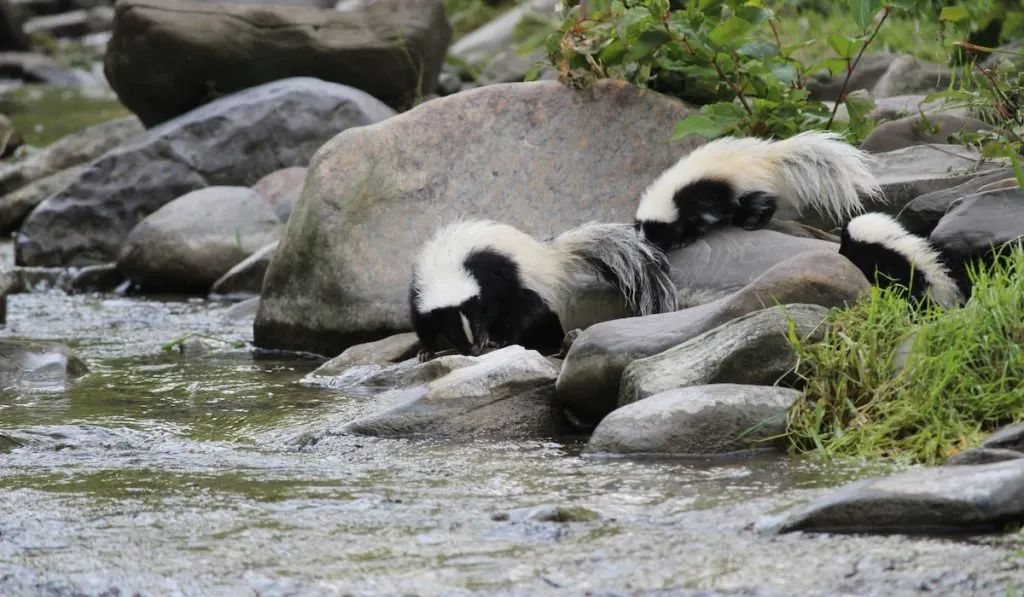
Striped Skunk
The Striped skunk can be recognized easily by its pattern and colors. It has broad stripes that cover its body length, although the coloration may vary.
The Striped skunk has narrow white stripes located at the center of its face, which differ in length and width across individuals.
Its tail is black, fluffy, and long. There may be stripes on its tail, but it often has a mixture of white and black hairs.
The Striped skunk is larger than the Eastern Spotted skunk. Its body length averages about 13-18 inches without the tail but 31.5 inches in total.
The Striped skunk is nocturnal. It sleeps during the day in its underground burrow and comes out at night to forage.
It uses scent markings to disclose its reproductive state and presence to other skunks. To communicate visually, they change their posture and raise their fur.
The Striped skunk is an omnivore and eats several matters, including small birds, bird eggs, insects, leaves, grains, small mammals, carrion, crustaceans, nuts, buds, grasses, and fruits. Their diet is 70% insects; they even attack colonial insect nests line ants and bees.
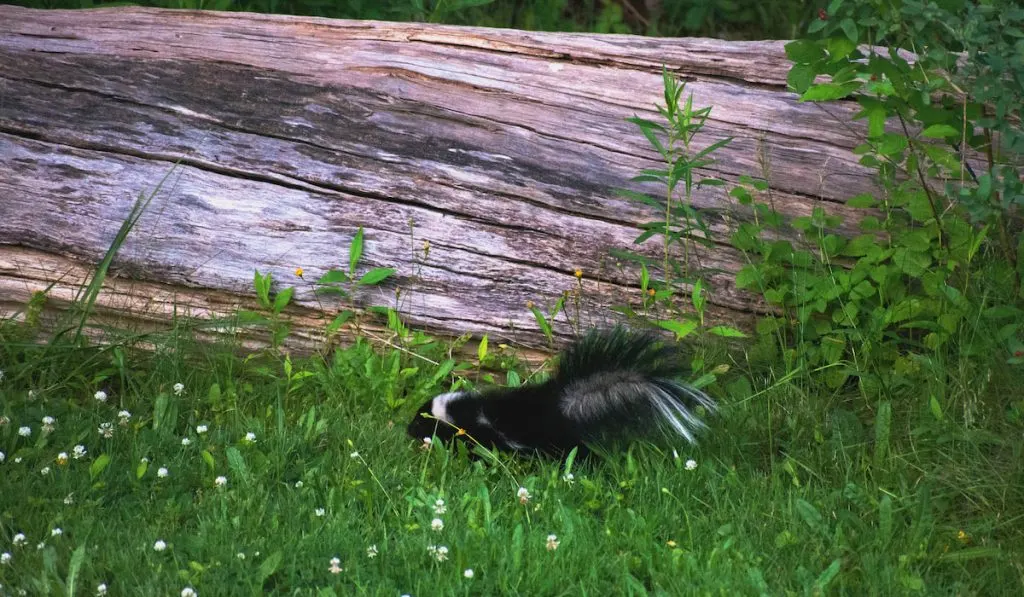
When attacking beehives, they wait for the bees to come out and swat them out of the air, then proceed to eat them. Striped skunks are opportunists and can change their diet depending on the resources available.
Eastern Spotted Skunk
The Eastern Spotted skunk has two subspecies in Florida, but they look similar. The coat of the Eastern Spotted skunk is black with several broken-up white stripes.
It also has white horizontal stripes on its shoulders & neck and vertical & irregular stripes with elongated spots on its side.
The Eastern Spotted skunk has a downward-pointing white triangle on its forehead. It also has white stripes behind its eye that continue along the side of its body.
The tail of the Eastern Spotted skunk is bushy, black & white at the tip and underneath.
The body of the Eastern Spotted skunk is 11-12.5 inches long without the tail. But in total, it measures 21-24 inches. The Eastern Spotted Skunk is smaller than the Striped skunk.
The Eastern Spotted Skunk has the silkiest and most attractive fur of all skunks. Its pelts were once deemed very valuable.
Of all skunk species, the Eastern Spotted Skunk remains the only tree climber. When approached by an enemy, it does a handstand, points its anal gland at the enemy, and sprays it.
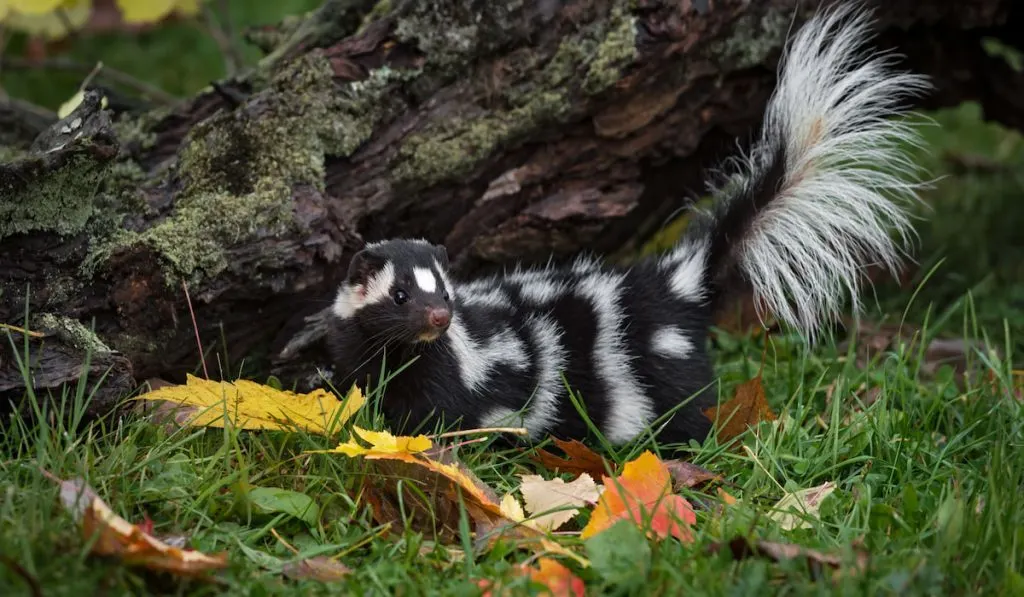
The Eastern Spotted Skunk is more agile and faster than bigger skunks. It also socializes more than other skunks, with several individuals sharing a den during winter. The Eastern Spotted Skunk is omnivorous, but its diet comprises mainly of small mammals.
The Eastern Spotted Skunk also feeds on other insects, grubs, mulberries, grapes, and corn. They can sometimes be attracted to leftover food, fruit trees, lawn insects, and gardens.
Eastern Spotted Skunks make their dens in empty gopher tortoise burrows, armadillo burrows, or brush piles even though they can dig theirs. They also use areas with tall grass, woodpiles, and places with similar characteristics.
When rearing their young, the Eastern Spotted Skunk does not occupy a place permanently. It prefers to move around and look for more comfortable dens.
What Do Skunks Live in? (Places Skunk Live In)
Skunks live in deserts, grasslands, forest edges, and woodlands. They usually build their homes in abandoned burrows. You may also find skunks living under hollow logs, large rocks, woodpiles, brush piles, and abandoned buildings.
Generally, skunks tend to live in dens. They dig using their strong front claws. You may find some of these holes dug in your yard. They sometimes look for and live in holes built and abandoned by other animals like woodchucks and foxes.
A skunk’s den is found in many locations. In the wild, their dens are dug around areas with tall grasses. In urban areas, skunks make their dens below structures like sheds.
What Animal Eats a Skunk?
Although skunks are known for their pungent odor and distinct coloring, they are still susceptible to predators in the wild.
Several animals attack and eat skunks from the air or ground. Some of these animals are almost unaffected by the odors of a skunk’s spray.
Certain ground carnivores kill and eat skunks, although the number of species that do so is unknown. Some of these animals include domestic dogs, coyotes, bobcats, mountain lions, and foxes.
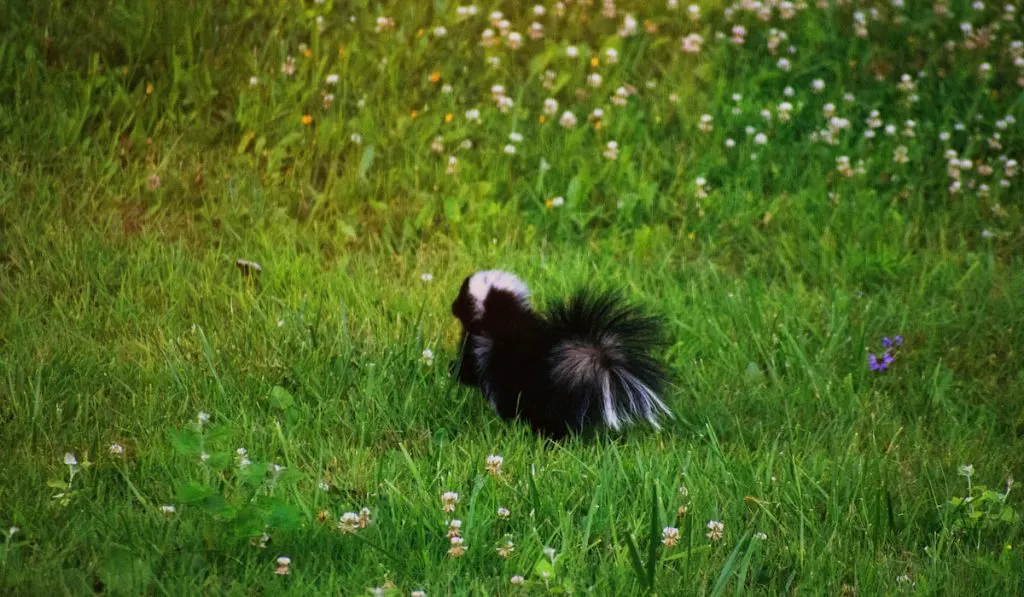
These animals do not eat skunks often because of how difficult it is to attack and kill a skunk successfully without being sprayed by it. The only reason these animals may prey on skunks is if their options for food are limited.
When it comes to aerial predators, skunks are not as lucky. Their effectual and notorious defense is useless against any predator attacking from the sky.
Bird species like the red-tailed hawk and great horned owl attack skunks from the sky. In fact, the main predator of a skunk is the Great Horned Owl.
The sense of smell for these birds is almost non-existent compared to other birds. It makes them less susceptible to a skunk’s spray.
Final Thoughts
There are two skunk species in Florida: The Striped skunk and the Eastern Spotted skunk. Of these two, the former is the larger species. The latter, the Eastern Spotted skunk species, is the only skunk species that can climb trees. Both types of skunks live in dens dug for themselves or dug and vacated by other animals.
Resources
- https://www.nwf.org/Magazines/National-Wildlife/2017/April-May/Animals/Skunks
- https://animals.mom.com/species-major-predators-skunks-3384.html
- https://www.livescience.com/55151-skunks.html
- https://myfwc.com/wildlifehabitats/profiles/mammals/land/skunks/
- http://www.floridiannature.com/floridaskunks.htm
- https://www.terminix.com/pest-control/skunks/habitat/
